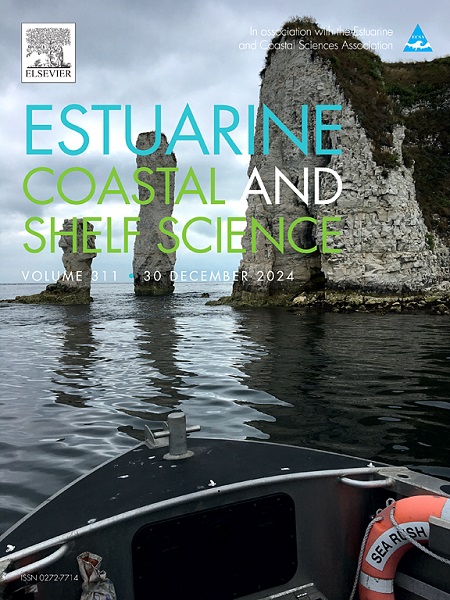Multidecadal mapping of arid intertidal ecosystems reveals a dynamic mosaic of habitats north-western Australia
IF 2.6
3区 地球科学
Q1 MARINE & FRESHWATER BIOLOGY
引用次数: 0
Abstract
Intertidal areas are dynamic environments and represent an important ecotone, with flora and fauna adapted to variation in tidal inundation. In arid coastlines there is complexity in tidal inundation, due to high temperatures and evaporative conditions that strongly influence the distribution of biota. The Pilbara coastline in north-west Australia is one of seven arid mangrove regions that also comprises extensive saltmarsh, cyanobacterial mats, and salt flats. Spatial extent and temporal mapping of these habitats has not previously been conducted. In this study, we undertake eight time-point models of 10 habitat classes over 400 km of the Pilbara coastline. Using a combination of Landsat 5, 7, 8 and 9 satellite scenes and high-resolution aerial images we develop a spatial-extent of predicted habitats observing the dynamic nature of the habitats, particularly for the cyanobacterial mat habitat. We find that cyanobacterial mats comprise the largest spatial extent of the intertidal habitat classes covering on average 34 % of the intertidal region, double that of the mangrove area (16 %). Across the time-points, pixels transitioning between high intertidal salt flat, cyanobacterial mat, and areas with bright salt were the largest combination of classes, and the second largest class overall (behind coastal vegetated habitats). This research comprehensively models the extent of the habitats that comprise the high intertidal zone of the Pilbara Coast that is a globally significant area of hypersaline habitat providing an important baseline and insights into the impacts of climate on arid intertidal habitats.
干旱潮间带生态系统的多年代际地图揭示了澳大利亚西北部栖息地的动态马赛克
潮间带是一个动态环境,是一个重要的过渡带,其动植物适应于潮汐淹没的变化。在干旱的海岸线,由于高温和蒸发条件强烈影响生物群的分布,潮汐淹没的情况很复杂。澳大利亚西北部的皮尔巴拉海岸线是七个干旱红树林地区之一,还包括广泛的盐沼、蓝藻席和盐滩。以前没有对这些生境的空间范围和时间进行测绘。在这项研究中,我们在400公里的皮尔巴拉海岸线上对10个栖息地类别进行了8个时间点模型。利用陆地卫星5号、7号、8号和9号卫星场景和高分辨率航空图像的组合,我们开发了一个预测栖息地的空间范围,观察栖息地的动态性质,特别是蓝藻垫栖息地。我们发现蓝藻席构成了潮间带栖息地类别的最大空间范围,平均覆盖潮间带区域的34%,是红树林区域(16%)的两倍。在整个时间点上,在高潮间带盐滩、蓝藻席和亮盐地区之间过渡的像素是最大的类别组合,也是第二大类别(仅次于沿海植被栖息地)。本研究全面模拟了包括皮尔巴拉海岸高潮间带的栖息地范围,这是一个全球重要的高盐栖息地区域,为气候对干旱潮间带栖息地的影响提供了重要的基线和见解。
本文章由计算机程序翻译,如有差异,请以英文原文为准。
求助全文
约1分钟内获得全文
求助全文
来源期刊
CiteScore
5.60
自引率
7.10%
发文量
374
审稿时长
9 months
期刊介绍:
Estuarine, Coastal and Shelf Science is an international multidisciplinary journal devoted to the analysis of saline water phenomena ranging from the outer edge of the continental shelf to the upper limits of the tidal zone. The journal provides a unique forum, unifying the multidisciplinary approaches to the study of the oceanography of estuaries, coastal zones, and continental shelf seas. It features original research papers, review papers and short communications treating such disciplines as zoology, botany, geology, sedimentology, physical oceanography.

 求助内容:
求助内容: 应助结果提醒方式:
应助结果提醒方式:


